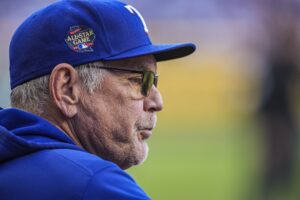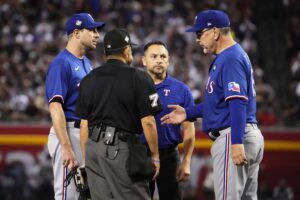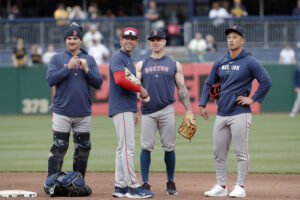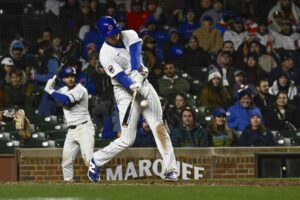The Seattle Pilots
1969
“Ah, 1969, what a year: hippies reigned in Woodstock, men landed on the moon, the Manson murders, and the Seattle Pilots. Can it get any better?”
“Wait a second. You’re trying to pull a fast one on me. What’s so great about the Seattle Pilots? What were they? An aviation club or something?”
“No, no, don’t worry, you didn’t click on the wrong link, this is still a baseball site, and the Seattle Pilots were (and under a different name still are) a major league baseball team.”
“Oh, so they just changed their name to the Mariners?”
“Nope. They became the Brewers in 1970.”
“The Seattle Brewers?”
“No, the Milwaukee Brewers.”
“Now I’m really confused. So they moved after just one season?”
“Yep. And if you haven’t guessed it yet, their season wasn’t the most successful on the field or in the front office. So if you’re game, hold on tight, because here comes the bumpy story of the Seattle Pilots.
Expansion
Major League Baseball decided to expand in 1969 due in part to the increasing pressure to keep up with the National Football League, which was gaining a stronger grasp on American TV sets. Baseball had been America’s pastime since the late 19th Century and MLB wanted the game to stay on top. So, as with any successful empire, think Roman, MLB decided to expand to gain a tighter grasp around the entertainment loving brains of the American (and Canadian) public. The lucky winners were Kansas City, Montreal, San Diego, and Seattle.
Why Seattle?
This all starts with the Pacific Coast League (PCL). Before the Brooklyn Dodgers and the New York Giants moved to Los Angeles and San Francisco, there were no major league teams on the West Coast. In fact, at the time the most western team was the Kansas City Athletics. Not an easy trip down the road to catch a ballgame and a dog.
So, pre-MLB on the West Coast was the PCL, which at times was called the third major league. As one can imagine after the Giants and Dodgers moved west the interest in the PCL started to wain and some of the teams moved to smaller markets. Eventually, Seattle’s PCL team, the Rainiers were bought out by the Los Angeles Angels (another MLB expansion team in 1961) in 1965. The city of Seattle desperately wanted a major league team, and having purchased Sick’s Stadium (the Rainiers stadium) in 1964, they had a yard for a ball club. The city lobbied for an expansion franchise in 1967 and was granted a team contingent on them renovating Sick’s Stadium until a new park could be built. Money was allocated for renovations, and the Emerald City was approved for a team.
Who Are These Guys?
The roster was set. At the helm would be Joe Schultz, a former major league catcher. The opening day lineup was a patchwork quilt of aging ballplayers and untested newcomers.
Starting at second was Tommy Harper, who recorded the first hit and run for the Pilots. He also went on to lead the league with 73 stolen bases, a Pilots/Brewers record that still stands today. Batting second and in right was Mike Hegan. Hegan homered in his first at-bat and was selected as the one and only All-Star, but had to pass on the honor because of an injury. Batting third and fourth were Tommy Davis in left and Don Mincher at first. Mincher replaced Hegan as the solo Pilots’ All-Star and still holds that title to this day.
Batting fifth and starting at third was Rich Rollins, and behind him in center was Jim Gosger. Catching for your Seattle Pilots was Jerry McNertney. McNertney led the league in runner’s caught stealing and finished second in assists and putouts. Batting eighth and starting at short was Ray Oyler. And starting on the bump was righty, Marty Pattin.
Not really the most recognizable lineup, but who’s to say.
Micro-Season
Opening day for the newly formed Seattle Pilots, who were named such because their owner was once a harbor pilot, took place on April 8, 1969, at Anaheim Stadium against the California Angels. They won the game 4 – 3, which one would hope to be a good sign. It was not.
The Pilots finished the 1969 season with a 64 – 98 record. This was good enough to get them last place in the AL West, thirty-three games behind the first-place Minnesota Twins. But, they did manage the second-worst record in the league. The dubious distinction of “worst record in the AL 1969” goes to the Cleveland Indians, who finished at 62 – 99. Tough luck, Cleveland.
Where Did They Go and Why?
So, was it poor attendance and bad baseball that made the Pilots move to Milwaukee? Nope. Most expansion teams don’t start off like the New York Yankees. Rest easy, Mr. Schultz, it wasn’t your managerial skills that failed. If we are going to point our finger at somebody–or somebodies–inability at deft executive execution, then we need to look upward–all the way to the top–to the team’s owner Dewey Soriano and his brother, team vice-president, Max Soriano.
The short of it is that the Soriano brothers borrowed money from former Indians owner, William R. Daly, to help finance the Pilots. But they were inept at fostering relationships with local investors and government officials, thus failing to create a monetary support system. This, coupled with an aging stadium that needed bags of money for improvements, and other various funding challenges, caused Daly to lose faith in his investment. So, when the Soriano’s needed more money from Daly, he refused to help them.
April 1, 1970
On April 1, 1970, the Seattle Pilots were ruled officially bankrupt. Dewey and Max sold to Bud Selig. Selig moved the franchise to Milwaukee where they became the Brewers. No more Pilots.
Ball Four
One can’t mention the Pilots without talking about Jim Bouton. If not for Jim Bouton‘s Ball Four it is likely that the Pilots would be remembered only by the most knowledgeable of baseball scholars. Jim Bouton was a relief pitcher for the Pilots. He was with the Yankees from ’62 – ’68 where he was a World Series champion in ’62 and an All-Star in ’63. When he signed with the Pilots his career was on a downswing, similar to many of his teammates. He kept a diary while with Seattle. That diary was then turned into Ball Four. Ball Four flipped the baseball world on its ear. Bouton exposed the sometimes ugly underbelly of baseball. The book caused a controversy that shook professional baseball to its core.
Seattle fans would have to wait seven years until they had another professional franchise, but their former team, the Pilots were forever immortalized by Bouton and his excellent book, Ball Four.
Main Photo:
Embed from Getty Images






